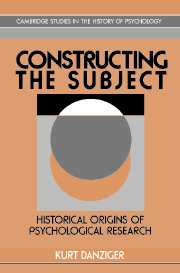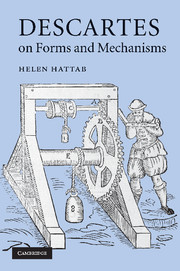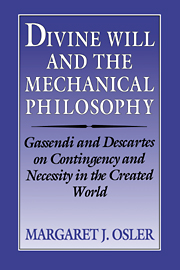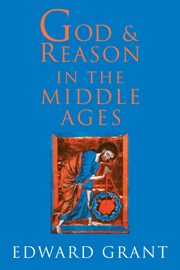Refine search
Actions for selected content:
13588 results in History of science and technology

Constructing the Subject
- Historical Origins of Psychological Research
-
- Published online:
- 18 September 2009
- Print publication:
- 29 June 1990

Constructing Scientific Psychology
- Karl Lashley's Mind-Brain Debates
-
- Published online:
- 16 September 2009
- Print publication:
- 13 January 1999

Grape vs. Grain
- A Historical, Technological, and Social Comparison of Wine and Beer
-
- Published online:
- 16 September 2009
- Print publication:
- 10 March 2008

Descartes on Forms and Mechanisms
-
- Published online:
- 15 September 2009
- Print publication:
- 23 July 2009

Divine Will and the Mechanical Philosophy
- Gassendi and Descartes on Contingency and Necessity in the Created World
-
- Published online:
- 11 September 2009
- Print publication:
- 24 June 1994
The Hotel that Became an Observatory: Mount Faulhorn as Singularity, Microcosm, and Macro-Tool
-
- Journal:
- Science in Context / Volume 22 / Issue 3 / September 2009
- Published online by Cambridge University Press:
- 01 September 2009, pp. 365-386
- Print publication:
- September 2009
-
- Article
- Export citation
SIC volume 22 issue 3 Cover and Front matter
-
- Journal:
- Science in Context / Volume 22 / Issue 3 / September 2009
- Published online by Cambridge University Press:
- 01 September 2009, pp. f1-f3
- Print publication:
- September 2009
-
- Article
-
- You have access
- Export citation
Counting on the Unexpected: Aimé Civiale's Mountain Photography
-
- Journal:
- Science in Context / Volume 22 / Issue 3 / September 2009
- Published online by Cambridge University Press:
- 01 September 2009, pp. 409-437
- Print publication:
- September 2009
-
- Article
- Export citation
“To demonstrate the exactness of the instrument”: Mountainside Trials of Precision in Scotland, 1774
-
- Journal:
- Science in Context / Volume 22 / Issue 3 / September 2009
- Published online by Cambridge University Press:
- 01 September 2009, pp. 323-340
- Print publication:
- September 2009
-
- Article
- Export citation
Professionals on the Peak
-
- Journal:
- Science in Context / Volume 22 / Issue 3 / September 2009
- Published online by Cambridge University Press:
- 01 September 2009, pp. 487-507
- Print publication:
- September 2009
-
- Article
- Export citation
Inherited Territories: The Glarus Alps, Knowledge Validation, and the Genealogical Organization of Nineteenth-Century Swiss Alpine Geognosy
-
- Journal:
- Science in Context / Volume 22 / Issue 3 / September 2009
- Published online by Cambridge University Press:
- 01 September 2009, pp. 439-461
- Print publication:
- September 2009
-
- Article
- Export citation
SIC volume 22 issue 3 Cover and Back matter
-
- Journal:
- Science in Context / Volume 22 / Issue 3 / September 2009
- Published online by Cambridge University Press:
- 01 September 2009, pp. b1-b6
- Print publication:
- September 2009
-
- Article
-
- You have access
- Export citation
Mountains Made in Switzerland: Facts and Concerns in Nineteenth-Century Cartography
-
- Journal:
- Science in Context / Volume 22 / Issue 3 / September 2009
- Published online by Cambridge University Press:
- 01 September 2009, pp. 387-408
- Print publication:
- September 2009
-
- Article
- Export citation
Mountains of Sublimity, Mountains of Fatigue: Towards a History of Speechlessness in the Alps
-
- Journal:
- Science in Context / Volume 22 / Issue 3 / September 2009
- Published online by Cambridge University Press:
- 01 September 2009, pp. 341-364
- Print publication:
- September 2009
-
- Article
- Export citation
The Elusive Placelessness of the Mont-Blanc Observatory (1893–1909): The Social Underpinnings of High-Altitude Observation
-
- Journal:
- Science in Context / Volume 22 / Issue 3 / September 2009
- Published online by Cambridge University Press:
- 01 September 2009, pp. 509-531
- Print publication:
- September 2009
-
- Article
- Export citation
Introduction: The Laboratory of Nature – Science in the Mountains
-
- Journal:
- Science in Context / Volume 22 / Issue 3 / September 2009
- Published online by Cambridge University Press:
- 01 September 2009, pp. 311-321
- Print publication:
- September 2009
-
- Article
- Export citation
The Storm Lab: Meteorology in the Austrian Alps
-
- Journal:
- Science in Context / Volume 22 / Issue 3 / September 2009
- Published online by Cambridge University Press:
- 01 September 2009, pp. 463-486
- Print publication:
- September 2009
-
- Article
- Export citation

God and Reason in the Middle Ages
-
- Published online:
- 28 August 2009
- Print publication:
- 30 July 2001
Scientific travel in the Atlantic world: the French expedition to Gorée and the Antilles, 1681–1683
-
- Journal:
- The British Journal for the History of Science / Volume 43 / Issue 1 / March 2010
- Published online by Cambridge University Press:
- 27 August 2009, pp. 1-17
- Print publication:
- March 2010
-
- Article
- Export citation
G. E. R. Lloyd, Cognitive Variations: Reflections on the Unity and Diversity of the Human Mind. Oxford: Clarendon Press, 2007. Pp. viii+201. ISBN 978-0-19-921461-7. £27.50 (hardback). 2009. ISBN 978-0-19-956625-9. £14.99 (paperback).
-
- Journal:
- The British Journal for the History of Science / Volume 42 / Issue 3 / September 2009
- Published online by Cambridge University Press:
- 24 August 2009, pp. 448-450
- Print publication:
- September 2009
-
- Article
- Export citation
